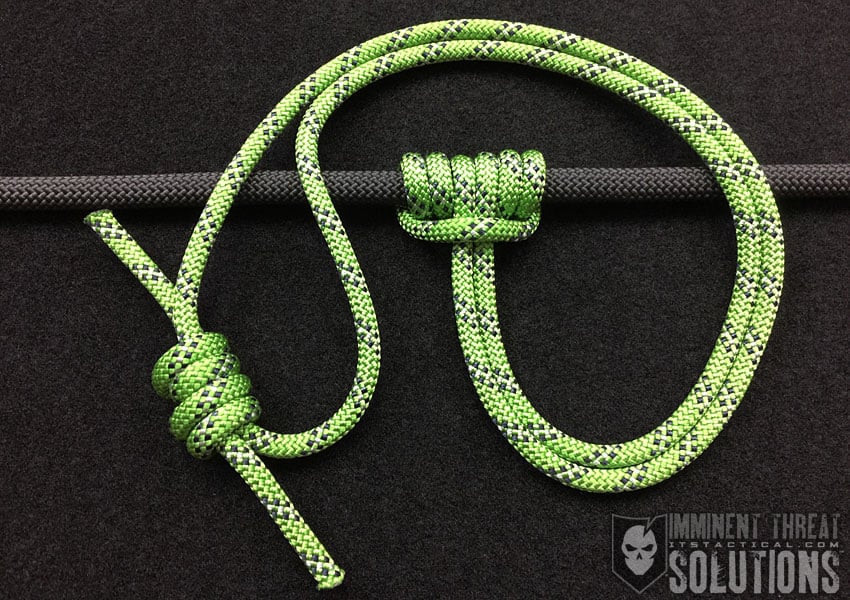

Today in our Knot of the Week HD I’ll be going over one of my favorite knots, the Prusik Knot. I refer to the fixed loop that’s created by first tying a Double Fisherman’s Knot as a Prusik Loop and I primarily use it as a backup during rappelling.
By wrapping the aforementioned loop around a larger diameter line, you create a versatile friction hitch that works by gripping the rope and providing friction to support a climbers weight. The Prusik is also referred to as an autoblock, which means that the “knot” can slide freely during a controlled descent, but will bind in the event of a fall; stopping your descent.
The Prusik’s use as an autoblock certainly isn’t the only one, it can also be paired with a second Prusik Loop to ascend a rope as well. The Prusik is used extensively in caving, climbing, rappelling and even rescue operations.
(Strength: 4/Security: 4/Stability: 4/Difficulty: 4) See below for what these ratings mean.
With a Prusik Knot, it’s important not to use too small of a diameter rope when compared to the main line you’re attaching it to. It can slip if your cordage is too small of a diameter and you never want to use paracord when using the Prusik Knot as an autoblock. The number of wraps around the main line will determine how tight the grip on the rope will be when loaded and more than three wraps is considered excessive.
A pull from either direction on the Prusik Loop will cause it to bind, locking the knot. Another great use for the Prusik is ascending a rope, which can be done with two Prusiks. When Prusiking, one Prusik Loop is attached to a climbing harness and another longer Prusik Loop is attached below that you place a foot into. The technique is to stand up in the foot loop, sliding the harness Prusik up the rope and then sitting down in it. Now just slide the foot Prusik up the rope and repeat.
Depending on the type, some traditional mechanical ascenders can damage a rope and using Prusiks can be a great way avoid that damage and always have a lightweight means of ascending the rope with you. Unlike mechanical ascenders that only grip when downward force is applied, the Prusik can be loaded from either direction to grip.
Strength/Security/Stability/Difficulty
Each knot will be assigned a rating from 1-5 (1 representing the lowest score) based on the following four properties:
Strength – All knots will weaken the strength of a rope, however, there are knots that are stronger than others. The scale here will reflect how strong the rope remains with the specified knot.
Security – The security scale refers to how well the knot will stay tied, and resist coming loose under a normal load.
Stability – Stability refers to how easily the knot will come untied under an abnormal load (i.e. the knot being pulled in a direction it was not intended to) A lower score here represents instability.
Difficulty – The lower the number, the easier a knot is to tie.

Do you enjoy witty banter and nostalgic geekdom all while sipping on a fine aged scotch? Then you’ll love our podcast!

Shop the ITS Store for exclusive merchandise, equipment and hard to find tactical gear.

Discussion